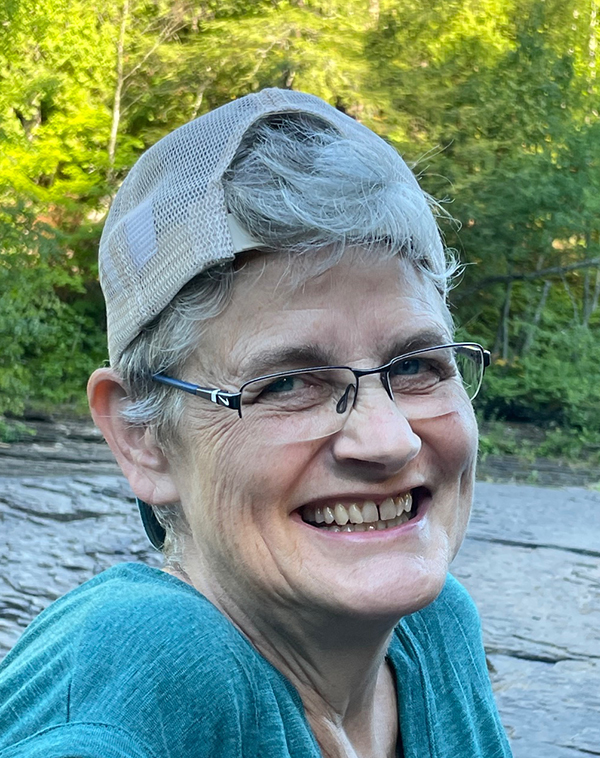Consider this ten-year-old girl, tall, with winsome dimples and ocean-blue eyes. She’s shy around adults, talkative with her friends. Her straight brown hair almost reaches her waist, and her black cotton robe covers a swimsuit no one sees. Barefoot, she steps down into the baptismal tank, its sides and bottom painted blue. When she stops she is chest-deep and the gown is soaking. The water is not quite bathtub-warm. It’s Easter Sunday evening. She’s as ready as she can be, which is to say not very. And she doesn’t like going under, but she knows how to hold her breath.
Consider her father, age forty-seven: same blue eyes, same dimples, but taller, with short blond hair turning gray. He is her pastor. He’s a quiet man, often silent except when preaching or praying, or telling a silly joke to his family. In plain white shirt and black trousers, he stands waist-deep in the tank, where he’ll receive, question, and immerse each candidate, then hand them up the opposite steps, dripping, to be enveloped by church ladies with towels. He does this a few times a year, always on Sunday evening, usually for a few adults. This time it’s children, upper-elementary students. One — this one — is his own. She is his youngest, his baby girl. She joins him in the water. His blue eyes sparkle and shine.
Eight months ago on a trip out west, this girl and her father viewed two bodies of water. In Oregon she learned that impossibly blue Crater Lake (the color so solid it looked fake from their lookout above) was almost 2000 feet deep. “I would drown in that!” she said. No, he said, not necessarily. Drowning isn’t about depth; you could drown in a foot of water. She’s not sure. She imagines sinking so deep she can’t make it back to the surface to breathe. If her feet touch the ground and her head is above water, is she safe? If she goes under but holds her breath, is she safe?
At Yellowstone Park they followed a boardwalk without railings across a crusty landscape, past bubbling hot puddles of mud, to a turquoise thermal spring called Morning Glory. A sign said the pool was bottomless. Steam rose from the surface. She couldn’t see far down its snaky, tunneled interior.
“Daddy,” she asked, “if I fell in, would you jump in and save me?”
Fifty-five years later she will imagine other ways he might have answered.
What he did say was honest: “No, I wouldn’t. It would be too late. That water is so hot you would be dead already.”
Back at home, life goes on. She misses some of fourth grade due to sickness, yet stays at the top of her class. A precocious reader, she browses her father’s books about faith and doctrine, developing worries she can’t express. When the flu keeps her out of the first two sessions of his baptism preparation class, she figures she won’t get baptized this year and is relieved, though she tells no one. But when she recovers, he helps her catch up. He doesn’t know that anything troubles her.
In the waters of baptism, the depth and temperature are perfect, the surface serene; she can see to the bottom. He asks for her testimony. “I realized I was a sinner,” she recites, “and Jesus died to save me.”
“Do you trust in Christ as your savior?” His blue eyes are kind.
“Yes,” she says.
He says the official words: “Upon the profession of your faith I baptize you…” and as she holds her breath he leans her under, just for a second, then lifts her back up, water running off her long brown hair. His heart is full. He has done what he can to place her in God’s hands, safe for eternity.
But she will harbor doubt. Not that he loves her and always will. But that she can ever be safe.


